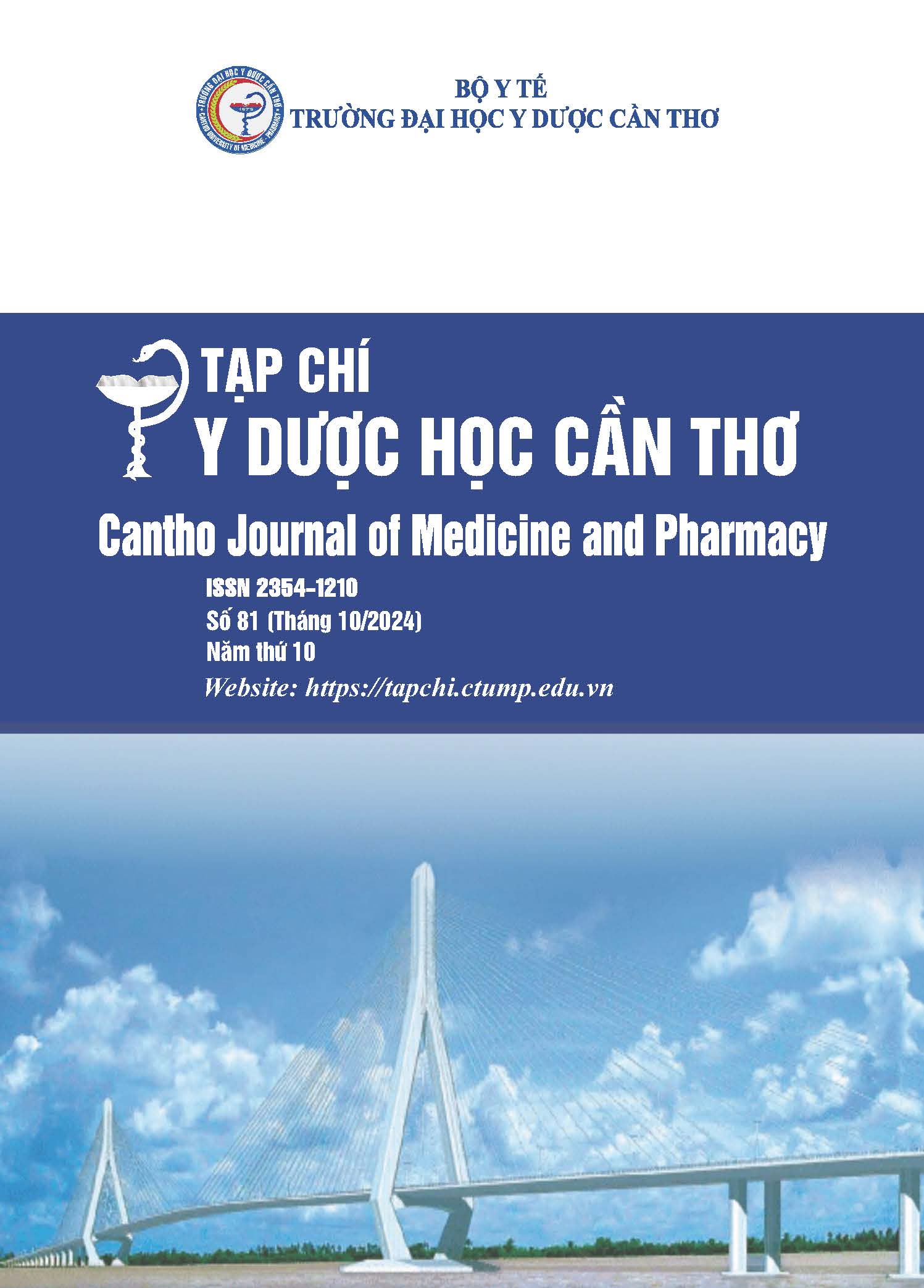CHARACTERISTICS OF IDIOPATHIC APLASTIC ANEMIA IN CHILDREN AT THE HO CHI MINH CITY BLOOD TRANSFUSION AND HEMATOLOGY HOSPITAL Truong Thi Minh Khang, Huynh Nghia, Vo Hoai Nhan, Trinh
Main Article Content
Abstract
Background: Idiopathic aplastic anemia in pediatric patients is a critical medical condition. Objective: To investigate into the biological and clinical attributes of idiopathic aplastic anemia in pediatric patients at Ho Chi Minh City Blood Transfusion and Hematology Hospital from January 2017 to December 2021. Materials and methods: Retrospective research was conducted on a series of cases, which included 49 pediatric patients who had been diagnosed with idiopathic idiopathic aplastic anemia and had been treated with a variety of procedures, including hematopoietic stem cell transplantation, immunosuppressants including anti-thymocyte globulin combined with Cyclosporine-A, Cyclosporine-A combined prednisolone, Cyclosporine-A combined with a receptor agonist thrombopoietin, isolated blood product transfusion at Ho Chi Minh City Blood Transfusion and Hematology Hospital during the period from January 2017 to December 2021. Results: A total of 49 cases that met the criteria were collected during the investigation. The mean age at diagnosis was 7.98 years, with a standard deviation of 0.57 years. The age cohort between 5 and 10 years comprised 44.9% of the overall cases. When conducting a diagnosis, it is important to pay close attention to the prominent indicators of anemia and bleeding. Approximately 77.6% of children in the pediatric population are experiencing severe and very severe aplastic anemia. The most common treatment protocols were anti-thymocyte globulin plus Cyclosporine-A at 60%, hematopoietic stem cell transplantation at 24%, supportive therapy at 8%, and both Cyclosporine-A combined prednisolone and Cyclosporine-A combined with a receptor agonist thrombopoietin at 4%. Before treatment selection, all patients received blood component therapy; 63.3% received antibiotics, antifungals, and antivirals; 6.1% received Cyclosporine-A, and 4.1% received corticosteroids. Conclusion: A comprehensive understanding of the disease's characteristics is extremely useful for classifying the condition, determining which therapy is most appropriate for each individual, and predicting the prognosis, despite the reality that there are numerous treatment protocols available.
Article Details
Keywords
Idiopathic aplastic anemia, clinical characteristics, paraclinical characteristics, treatment protocols
References
2. Bacigalupo A, How treat acquired aplastic anemia. Blood 2017. 129(11), 1428-1436, doi:
10.1182/blood-2016-08-693481.
3. Samarasinghe S., Veys P., Vora A, Paediatric amendment to adult BSH Guidelines for aplastic anaemia. British Journal of Haematology. 2018. 180(2), 201-205, doi: 10.1111/bjh.15066.
4. Bệnh viện Truyền Máu Huyết Học TP Hồ Chí Minh. Phác đồ điều trị suy tủy. Phác đồ điều trị tập 1, 2019, 51-57.
5. Bộ Y tế, Suy tủy xương, Hướng dẫn chẩn đoán và điều trị một số bệnh lý Huyết Học, 2022, 32 - 39.
6. Scheinberg P, Nunez O, Young NS, Retreatment with rabbit antithymocyte globulin and ciclosporin for patients with relapsed or refractory severe aplastic anaemia. British Journal of Haematology. 2006. 133(6), 622-627, DOI: 10.1111/j.1365-2141.2006.06098.x.
7. Trần Ngọc Kim Anh, Huỳnh Nghĩa. Đánh giá hiệu quả điều trị bệnh suy tủy xương với ức chế miễn dịch Antithymocyte và Cyclosporin A ở trẻ em trong 5 năm. Tạp chí Y học Việt Nam. 2014. 423, 591-598.
8. Nguyễn Thị Hương Mai, Nghiên cứu đặc điểm dịch tễ, lâm sàng, huyết học, điều trị suy tủy toàn bộ ở trẻ em bằng antithymocyte globulin và cyclosporine A. Luận án tiến sĩ y học chuyên ngành huyết học Trường Đại học Y Hà Nội. 2021. 176.
9. Hoàng Dương Huy, Bước đầu đánh giá kết quả sớm ghép tế bào gốc đồng loài trong điều trị bệnh nhi suy tủy xương, Luận văn thạc sĩ y học chuyên ngành Huyết học Truyền Máu. 2018. Trường Đại học Y Hà Nội.
10. Huỳnh Thiện Ngôn, Huỳnh Văn Mẫn, Đánh giá kết quả điều trị ghép tế bào gốc đồng loài trên người bệnh suy tủy xương tại BV Truyền Máu Huyết Học. Tạp chí Y học Việt Nam. 2022. 520.


